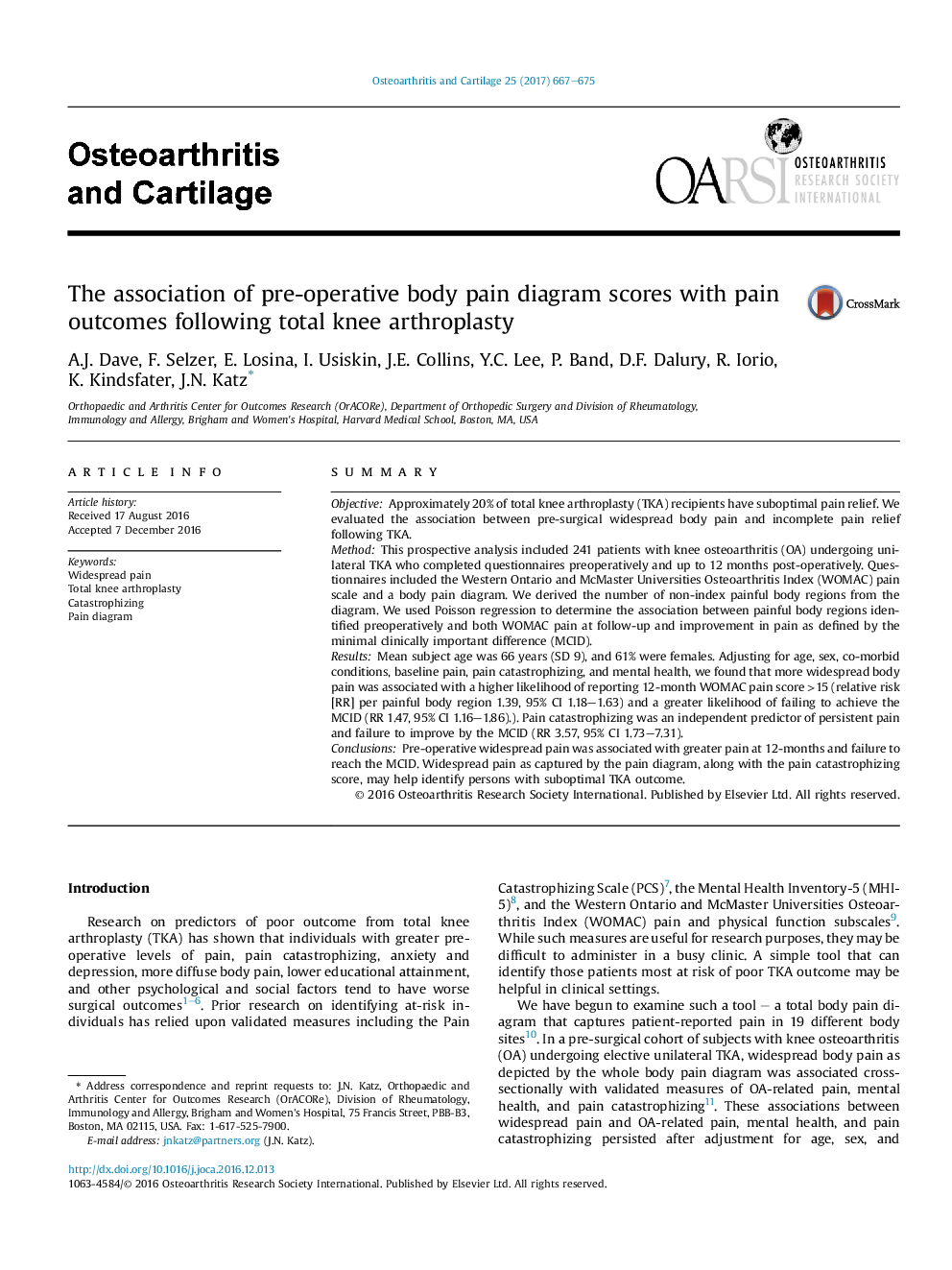| کد مقاله | کد نشریه | سال انتشار | مقاله انگلیسی | نسخه تمام متن |
|---|---|---|---|---|
| 5669431 | 1407966 | 2017 | 9 صفحه PDF | دانلود رایگان |
SummaryObjectiveApproximately 20% of total knee arthroplasty (TKA) recipients have suboptimal pain relief. We evaluated the association between pre-surgical widespread body pain and incomplete pain relief following TKA.MethodThis prospective analysis included 241 patients with knee osteoarthritis (OA) undergoing unilateral TKA who completed questionnaires preoperatively and up to 12 months post-operatively. Questionnaires included the Western Ontario and McMaster Universities Osteoarthritis Index (WOMAC) pain scale and a body pain diagram. We derived the number of non-index painful body regions from the diagram. We used Poisson regression to determine the association between painful body regions identified preoperatively and both WOMAC pain at follow-up and improvement in pain as defined by the minimal clinically important difference (MCID).ResultsMean subject age was 66 years (SD 9), and 61% were females. Adjusting for age, sex, co-morbid conditions, baseline pain, pain catastrophizing, and mental health, we found that more widespread body pain was associated with a higher likelihood of reporting 12-month WOMAC pain score >15 (relative risk [RR] per painful body region 1.39, 95% CI 1.18-1.63) and a greater likelihood of failing to achieve the MCID (RR 1.47, 95% CI 1.16-1.86).). Pain catastrophizing was an independent predictor of persistent pain and failure to improve by the MCID (RR 3.57, 95% CI 1.73-7.31).ConclusionsPre-operative widespread pain was associated with greater pain at 12-months and failure to reach the MCID. Widespread pain as captured by the pain diagram, along with the pain catastrophizing score, may help identify persons with suboptimal TKA outcome.
Journal: Osteoarthritis and Cartilage - Volume 25, Issue 5, May 2017, Pages 667-675
